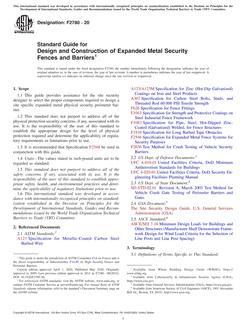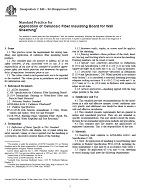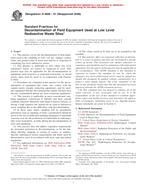1.1 This guide covers core-sampling terminology, advantages and disadvantages of different types of core samplers, core-distortions that may occur during sampling, techniques for detecting and minimizing core distortions, and methods for dissecting and preserving sediment cores.
1.2 In this guide, sampling procedures and equipment are divided into the following categories based on water depth: sampling in depths shallower than 0.5 m, sampling in depths between 0.5 m and 10 m, and sampling in depths exceeding 10 m. Each category is divided into two sections: equipment for collecting short cores and equipment for collecting long cores.
1.3 This guide emphasizes general principles. Only in a few instances are step-by-step instructions given. Because core sampling is a field-based operation, methods and equipment must usually be modified to suit local conditions. This modification process requires two essential ingredients: operator skill and judgment. Neither can be replaced by written rules.
1.4 Drawings of samplers are included to show sizes and proportions. These samplers are offered primarily as examples (or generic representations) of equipment that can be purchased commercially or built from plans in technical journals.
1.5 This guide is a brief summary of published scientific articles and engineering reports. These references are listed in this guide. These documents provide operational details that are not given in this guide but are nevertheless essential to the successful planning and completion of core sampling projects.
1.6 This standard does not purport to address all of the safety concerns, if any, associated with its use. It is the responsibility of the user of this standard to establish appropriate safety and health practices and determine the applicability of regulatory limitations prior to use. For specific warning statements, see 6.3 and 11.5.
Product Details
- Published:
- 10/01/2008
- Number of Pages:
- 14
- File Size:
- 1 file , 390 KB


